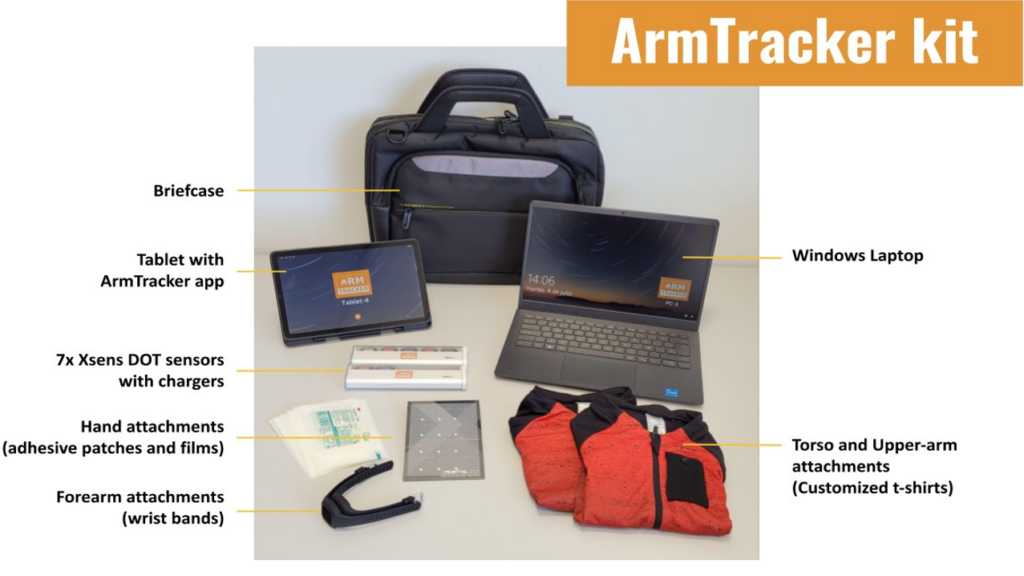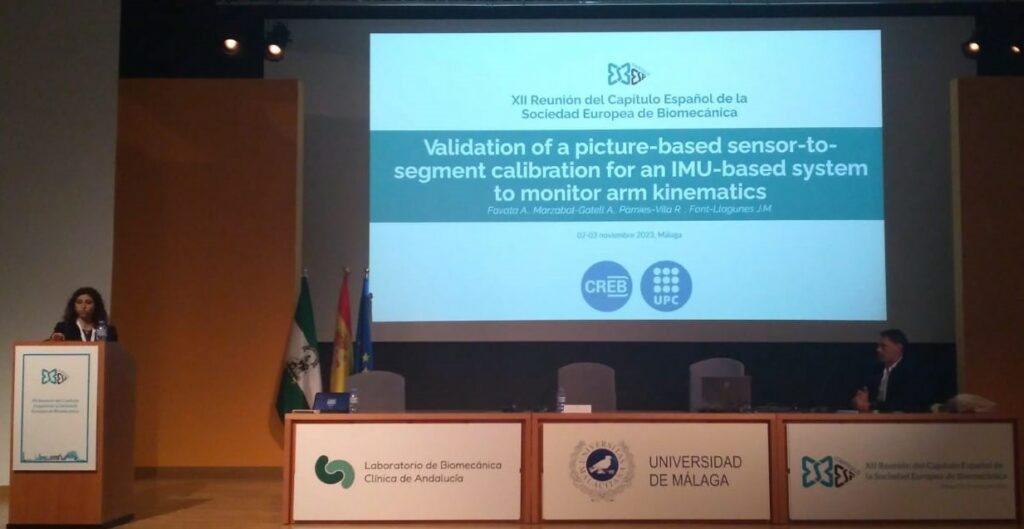
1 Predoctoral Researcher, Biomechanical Engineering Lab (BIOMEC), Diagonal 647, 08028 Barcelona, Spain.
How can inertial sensors assess the effectiveness of neuromuscular disease treatments in children?
In the medical field, the clinicians seek instruments to quantitatively assess the patient’s movement to evaluate the progression of the disease. In the motion analysis field, there are different tools to quantify the movement: goniometer, the optoelectronic motion capture and wearable sensor(Walmsley et al., 2018). All of them have positive and negative aspects but latterly the wearable sensors are gaining popularity thanks to some of their main characteristics like small dimension, light weight and reduced price. In particular, the IMUs have gained popularity because they allow for a quantitative and objective analysis outside the laboratory (Iosa et al., 2016).

My PhD thesis focuses on the development of a state-of-the-art wearable system to assess upper limb motor function in real life conditions for patients with Duchenne muscular dystrophy (DMD) and spinal muscular atrophy (SMA). The project is carried out at BIOMEC, supervised by Josep Maria Font-Llagunes and Rosa Pamies-Vila, and is in collaboration with Institute of Robotics (IRI) and the Hospital Sant Joan de Deu and it is founded by La Maratò de TV3.
The Duchenne Muscular Dystrophy (DMD) and the Spinal Muscular Atrophy (SMA) are two rare neuromuscular diseases characterized by muscle weakness that lead to inability or loss of ambulation, respiratory and cardiologic problems. The latest advances in gene therapy have opened a new era for DMD and SMA patients. Nevertheless, the methodologies and the scale used to evaluate and quantify the progression of these new therapies are not adequate.They are performed in an intermittent way and so influenced by external factors like the motivation, the time of the day ect. Finally, limitations exist in terms of objectivity since the score is based just on the observation of the clinician (MacEira-Elvira et al., 2019).
In this context, the ArmTracker will represent a useful device to objectively assess and continuously monitor the motor function of the upper limb in children with DMD and SMA.

As a PhD student, the opportunity to actively participate in Congress and Workshops within the field of my research is essential. These opportunities not only allow me to present my work and receive constructive feedback, fostering improvement and refinement, but it also serves as a nexus for knowledge exchange. The participation of PhD students and professors from diverse universities not only creates an enriching international context but also provides a stimulating environment to share ideas and stay abreast of the latest developments in the mechanical field. The prospect of contributing to and learning from this collective academic discourse underscores the significance of participating in such events.
Iosa M, Picerno P, Paolucci S, Morone G. Wearable inertial sensors for human movement analysis. Expert Review of Medical Devices 13 (2016) 641–659. doi:10.1080/17434440. 2016.1198694
MacEira-Elvira, P., Popa, T., Schmid, A. C., & Hummel, F. C. (2019). Wearable technology in stroke rehabilitation: Towards improved diagnosis and treatment of upper-limb motor impairment. Journal of NeuroEngineering and Rehabilitation, 16(1). https://doi.org/10.1186/s12984-019-0612-y
Walmsley, C. P., Williams, S. A., Grisbrook, T., Elliott, C., Imms, C., & Campbell, A. (2018). Measurement of Upper Limb Range of Motion Using Wearable Sensors : A Systematic Review. Sports Med Open. 2018 Nov 29;4(1):53. doi: 10.1186/s40798-018-0167-7. PMID: 30499058; PMCID: PMC6265374



